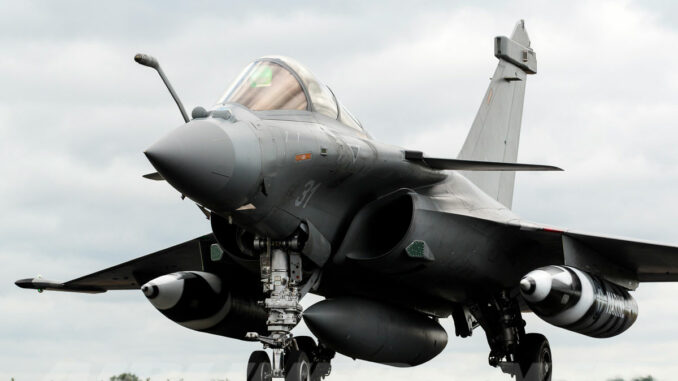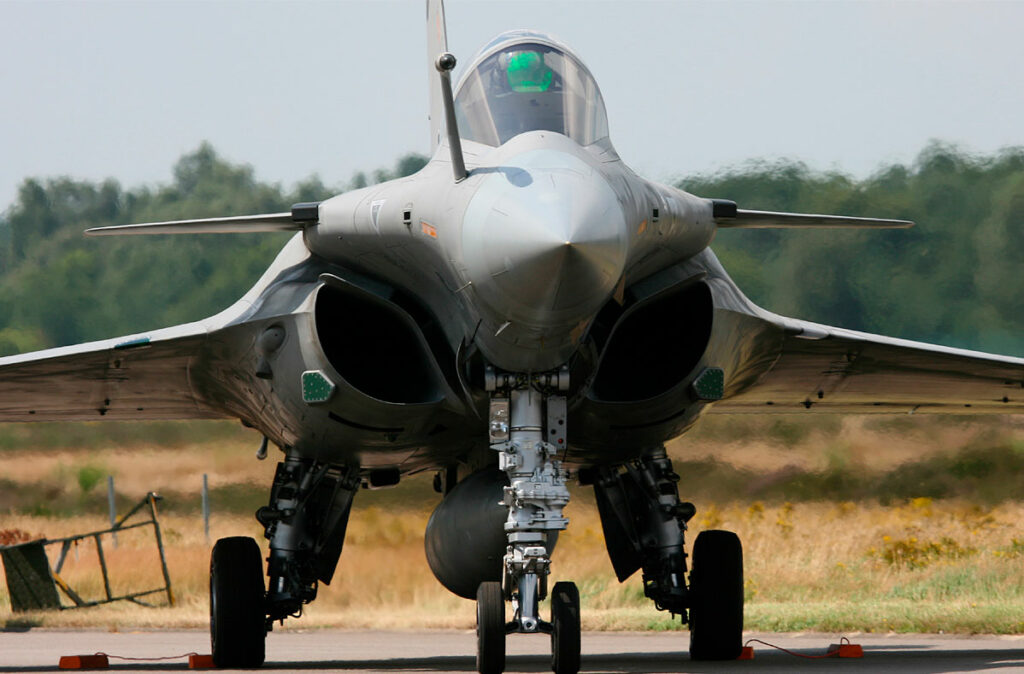
India and France have signed a contract worth 63,000 crores for 26 Rafale Marine aircraft, strengthening the INS Vikrant’s fleet.
India has just concluded a major agreement with France for the acquisition of 26 Rafale Marine aircraft for aircraft carriers, notably the INS Vikrant. This contract, worth 63,000 crore rupees (approximately 7 billion euros), aims to overcome the current limitations of the MiG-29K until the development of an Indian naval fighter. The agreement also includes maintenance, logistics and local production of parts. This strategic acquisition increases India’s Rafale fleet to 62 units, strengthening its 4.5th generation air fleet.
A strategic order for 26 Rafale Marine aircraft to strengthen the Indian naval fleet
India has signed a major contract with France for the acquisition of 26 Rafale Marine aircraft to equip the INS Vikrant, its new aircraft carrier. The agreement is worth 63,000 crore rupees, or approximately $7 billion at the current exchange rate (1 US dollar ≈ 90 rupees). This strategic choice aims to compensate for the shortcomings encountered with the MiG-29K, currently in service on the INS Vikramaditya and INS Vikrant.
The Rafale Marine (Rafale M) was chosen over its American competitor, the F/A-18 Super Hornet, following a technical and operational evaluation conducted in 2022 by the Indian Navy. The Rafale M demonstrated better compatibility with the INS Vikrant’s arrestor gear and ski-jump systems. Its ability to operate from an aircraft carrier without a catapult, using only a ski-jump, was a decisive factor.
The Rafale M can carry up to 9.5 tons of external payload, including Meteor long-range air-to-air missiles (estimated range of 150 kilometers), Scalp air-to-ground missiles, and AASM guided bombs. Its range of 1,850 kilometers (without refueling) provides increased operational coverage for the Indian Navy.
The urgency of this acquisition is linked to the operational status of the MiG-29K: of the 45 units delivered, approximately 30% are regularly unavailable, according to reports from the Indian Court of Auditors and internal analyses by the Navy.
Delivery of the Rafale M is expected to begin in 2027, with a production rate tailored to India’s specific needs. Each aircraft will be adapted to Indian climatic conditions, including increased resistance to humidity and high temperatures.

Strategic consequences of the strengthening of the INS Vikrant
The arrival of the Rafale M is a real turning point for the operational autonomy of the INS Vikrant. This 45,000-ton, 262-meter-long aircraft carrier entered service in September 2022, but its effectiveness in real missions remains limited without high-performance aircraft on board.
The Indian Navy aims to build an air wing of 30 aircraft per aircraft carrier to meet current standards for maritime power projection. With the Rafale M, the INS Vikrant will now be able to carry out air defense, land strike, and electronic warfare missions.
The presence of these fighters also increases India’s regional deterrence capability in the Indian Ocean, particularly in the face of the rise of the Chinese navy. In 2023, China already had three aircraft carriers (Liaoning, Shandong, and Fujian). By integrating the Rafale M, the Indian Navy is equipping itself with a more credible force to counter this influence.
The operational cost of a Rafale M is estimated at between €15,000 and €20,000 per flight hour, making it an expensive aircraft to maintain, but technologically superior to the Russian MiG-29K. Controlling these costs will require intensive crew training and partially localized maintenance.
An industrial and logistical component integrated into the agreement
The contract includes a comprehensive logistics package to support the operational life of the aircraft: spare parts, technical documentation, mobile maintenance stations, flight simulators, and training for Indian technicians and pilots in France and India.
In addition, part of the production of spare parts will be located in India as part of the “Make in India” initiative. Dassault Aviation and Safran have committed to transferring certain non-critical technologies to the Indian defense industry, particularly for structural parts, electronic sub-assemblies, and onboard equipment.
The local industrialization rate could reach 25%, well above the previous Rafale Air Force contract, where it did not exceed 13% according to public data. This is a step forward for India, which is seeking to reduce its dependence on arms imports (still above 65% according to SIPRI).
Maintenance of the Rafale M aircraft will be entrusted to a joint French-Indian structure based at the Goa naval base, where the INS Vikrant is moored when not on mission.

The limitations and challenges of this acquisition for India
While the acquisition of the Rafale M aircraft will strengthen the Indian Navy’s capabilities, several technical, financial, and political challenges remain.
First, the overall cost is high: €7 billion for 26 aircraft means an average unit cost, including maintenance and infrastructure, of €270 million per aircraft. By way of comparison, a US F-35C designed for aircraft carriers costs around $100 million (approximately €93 million), almost three times less.
Second, the need to integrate the Rafale M into systems designed for the MiG-29K will require significant modifications. Flight decks, elevators, and ammunition storage areas will have to be adapted, resulting in additional costs and maintenance downtime.
Finally, increased dependence on France for maintenance, spare parts, and onboard software updates creates strategic vulnerability. In the event of future diplomatic tensions, these dependencies could limit the Indian Navy’s freedom of action.
It is also important to note that India is simultaneously pursuing the development of its own carrier-based fighter, the Twin Engine Deck-Based Fighter (TEDBF), scheduled for a first flight around 2026-2027. If this project is successful, it could render part of the Rafale M fleet redundant in the medium term.
War Wings Daily is an independant magazine.